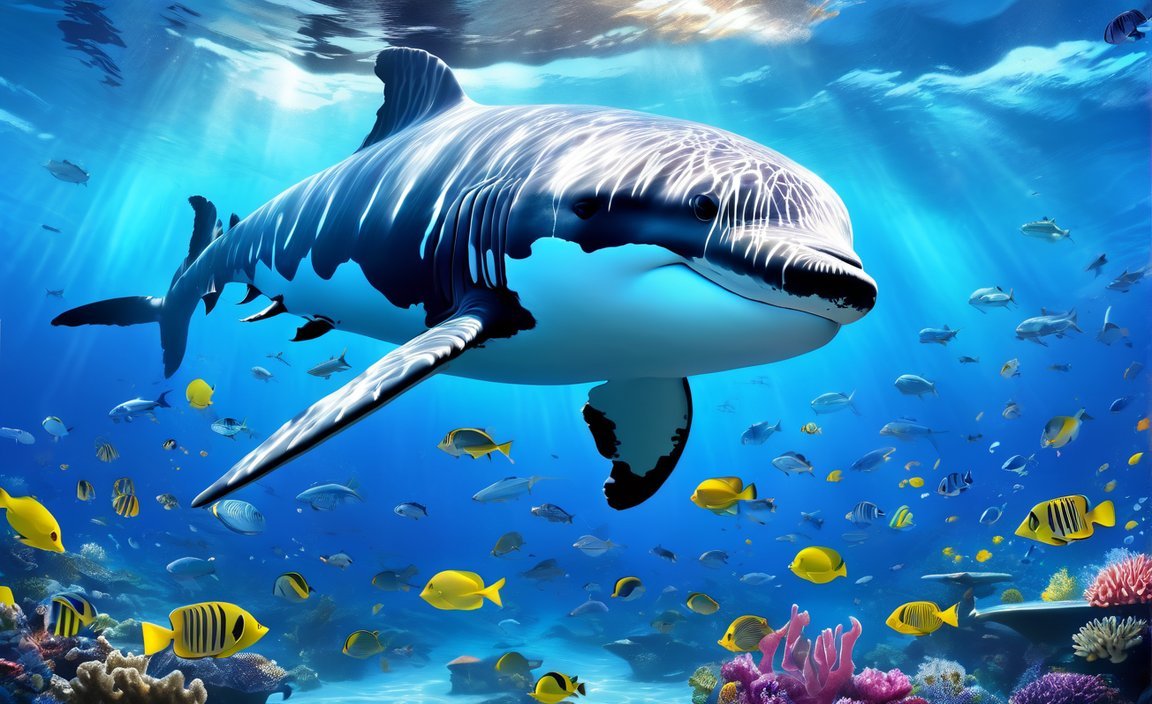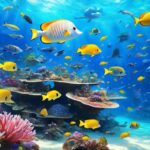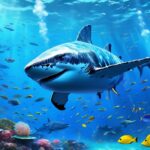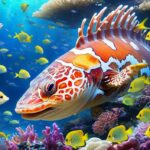Discover 10 Fascinating Facts About Ocean Animals as we dive into the captivating world beneath the waves. From the mighty blue whale to the mesmerizing bioluminescent creatures of the deep, this article unveils mesmerizing insights into the remarkable adaptations and behaviors of marine life. Journey with us as we explore the wonders of the ocean and shed light on some lesser-known facts about these incredible creatures.
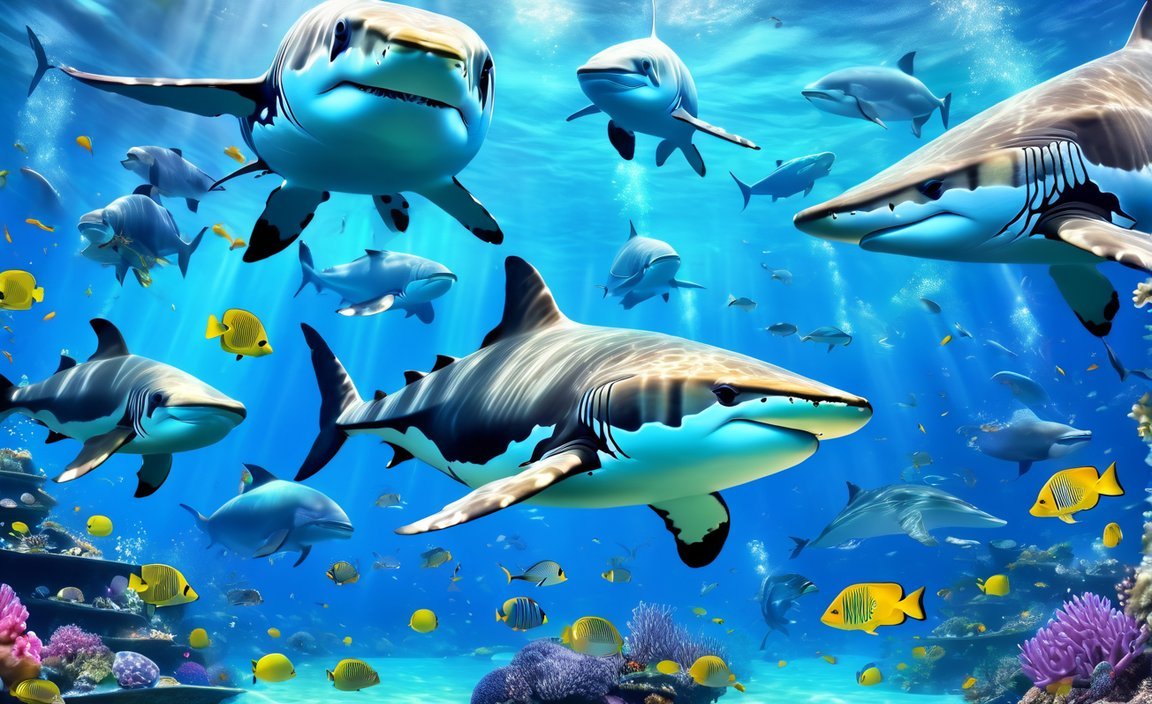
Key Takeaways:
- Seahorses are the only animals where the males give birth and care for their young.
- Shrimp have their heart located in their head.
- Sea sponges are alive even though they lack most organs and body parts.
- Turtles are found on every continent except Antarctica.
- The blue whale is the largest animal to ever live, reaching lengths as long as two school buses.
- Sea turtles have been around since the time of dinosaurs.
- Some sharks, like the great white shark, are warm-blooded.
- Sea lions, seals, and walruses are called pinnipeds due to their winged feet.
- Dolphins have excellent hearing and vision, while whales communicate through singing.
- Phytoplankton, tiny algae, are crucial for oxygen production in the ocean.
For more information on ocean animals, you can visit the following sources:
– allthatsinteresting.com
– firstcry.com
Remember to always explore and discover the wonders of the ocean and its fascinating inhabitants!
10 Facts About Ocean Animals
Fact 1: Male Seahorses Give Birth and Take Care of Their Young
Did you know that seahorses are the only animals in which the male, not the female, gives birth and cares for their young? It’s quite a unique trait that sets seahorses apart from other ocean creatures[^1^]. Imagine the male seahorse gracefully gliding through the water with tiny babies clinging to his belly. It’s truly a remarkable sight!
Fact 2: A Shrimp’s Heart Is Located in Its Head
Here’s an interesting fact about shrimp: their hearts are located in their heads[^1^]. Yes, you heard it right! While this might seem unusual to us, it’s perfectly normal for these fascinating ocean animals. So, the next time you come across a shrimp, remember that its heart beats right beneath its tiny little head.
Fact 3: Sea Sponges Are Alive Without Any Organ Systems
Sea sponges defy all expectations of what we consider necessary for an animal to survive. Despite having no head, mouth, eyes, feelers, bones, heart, lungs, or brains, sea sponges are alive[^1^]. They may not possess the typical organ systems, but they play a crucial role in marine ecosystems, providing shelter and habitat to numerous other ocean creatures.
Fact 4: Turtles Thrive on Every Continent Except Antarctica
Turtles are incredibly adaptive creatures and can be found on every continent, except for Antarctica[^1^]. From the sandy beaches of tropical islands to the rugged coastlines of temperate regions, turtles have successfully made their homes in diverse environments. Their ability to thrive in various landscapes makes them truly remarkable ocean animals.
Fact 5: The Blue Whale Is the Largest Animal to Have Ever Lived
Prepare to be awestruck, because the blue whale is the largest animal ever to live on Earth[^1^]. To give you a sense of its immense size, a blue whale can reach lengths as long as two school buses! Just imagine encountering this majestic creature swimming effortlessly through the vast expanse of the ocean. It’s a sight that truly leaves you in awe.
Fact 6: Sea Turtles Have Survived since the Time of Dinosaurs
Sea turtles have been around for millions of years and have witnessed the rise and fall of dinosaurs[^1^]. These incredible creatures have managed to adapt and survive through countless changes in the world’s ecosystems. Their resilience and longevity make them a living testament to the power of evolution and the wonders of nature.
Fact 7: Some Sharks, Like the Great White, Are Warm-Blooded
When you think of sharks, you may envision them as cold-blooded predators lurking in the depths of the ocean. However, some sharks, like the great white, are actually warm-blooded[^1^]. This means that they can regulate their body temperature, allowing them to swim in both warm and cold waters. The marvels of nature never cease to amaze!
Fact 8: Sea Lions, Seals, and Walruses Are Winged-Footed Pinnipeds
Sea lions, seals, and walruses belong to a group of marine mammals called pinnipeds, which translates to “winged-footed” in Latin[^1^]. This name perfectly captures their unique adaptation for life in the ocean. These playful and graceful animals use their flippers to swim, dive, and navigate the waters with incredible agility.
Fact 9: Dolphins and Whales Communicate Differently
Dolphins and whales are known for their remarkable communication abilities. Dolphins have excellent hearing and vision, allowing them to communicate effectively with one another[^1^]. On the other hand, whales communicate through singing, producing beautiful and complex melodies that travel through the vast ocean. Both methods of communication are fascinating and unique to these incredible ocean animals.
Fact 10: Tiny Algae Called Phytoplankton Are Crucial for Oxygen Production
While we often associate plants with green leaves and towering forests, most ocean plants are actually tiny algae called phytoplankton[^1^]. These microscopic organisms play a crucial role in oxygen production and are the foundation of marine food chains. They may be small in size, but their impact on the health of our oceans and the planet is immense.
Phew! Those were ten fascinating facts about ocean animals. The wonders of the ocean never cease to amaze, from the incredible adaptations of seahorses and sea sponges to the impressive size of blue whales. Each fact reveals a small glimpse into the extraordinary and diverse world of underwater life.
So, the next time you find yourself by the ocean’s edge, take a moment to appreciate the beauty and complexity of the creatures that call it home. Let these facts spark your curiosity and encourage you to explore and discover even more about the wonders that lie beneath the waves.
For more information on ocean animals, you can visit the following sources:
- allthatsinteresting.com [^1^]
- firstcry.com [^2^]
Remember to always explore and discover the wonders of the ocean and its fascinating inhabitants!
[^1^]: allthatsinteresting.com [source]
[^2^]: firstcry.com [source]
Check out these fascinating 10 facts about dogs in Hindi. Discover more about their behavior, habits, and roles as beloved pets. 10 facts about dogs in Hindi
Did you know that ground pollution poses serious threats to the environment? Learn about the 10 alarming facts about ground pollution and what can be done to mitigate its effects. 10 facts about ground pollution
Dive into the mesmerizing world of marine animals with these 10 intriguing facts. From majestic whales to vibrant coral reefs, there’s so much to discover and admire. 10 facts about marine animals
Discover the incredible world of marine mammals and their unique adaptations. Explore interesting facts about dolphins, seals, and even the majestic whales that roam our oceans. 10 facts about marine mammals
If you’re a pet lover, you won’t want to miss these 10 fascinating facts about our furry companions. Learn more about their history, behavior, and the joy they bring to our lives. 10 facts about pets
Dive deep into the enchanting world of sea animals and unravel their hidden secrets. From colorful fish to mysterious creatures of the deep, you’ll be amazed by these 10 captivating facts. 10 facts about sea animals
Explore the curious world of slugs and snails with these 10 surprising facts. Discover the remarkable adaptations and behaviors of these slimy yet fascinating creatures. 10 facts about slugs and snails
Uncover the intriguing world of snapping turtles and their survival tactics. From their powerful jaws to their unique shells, these 10 facts will leave you in awe of these magnificent reptiles. 10 facts about snapping turtles
Outline 3: Interesting Behaviors Exhibited by Ocean Animals
Fish are capable of changing their gender in a process called sequential hermaphroditism. For example, clownfish are born male but can change into females under certain circumstances. This enables them to adjust their reproductive strategy based on environmental or social factors, ensuring their reproductive success within a group of closely related individuals.
The Paedocypris fish holds the title for being the world’s smallest fish, measuring only a few millimeters in length. Despite its tiny size, it can navigate through dense vegetation and find shelter in small water bodies, making it well-adapted to its habitat in the swamps and peat swamps of Southeast Asia.
The whale shark, on the other hand, is the largest fish in the ocean, measuring up to 40 feet in length. Despite its enormous size, the whale shark sustains itself by consuming plankton and small fish. It uses its wide mouth as a filter, allowing it to capture its food while posing no threat to humans. This gentle giant is often sought out by divers for unforgettable encounters.
Key Takeaways:
– Some fish species exhibit sequential hermaphroditism, changing their gender based on environmental or social factors.
– The Paedocypris fish holds the record for being the world’s smallest fish.
– The whale shark, despite its massive size, sustains itself through filter feeding, consuming plankton and small fish.
Sources:
1. All That’s Interesting: “Amazing Ocean Animals Facts”
2. Facts On Tap: “20 Mind-Blowing Fun Facts About Ocean Animals”
Unique Characteristics of Deep-Sea Creatures
The deep sea is a mysterious and unexplored realm, inhabited by fascinating creatures that have adapted to survive in the extreme conditions of the ocean’s depths. These deep-sea creatures possess unique characteristics that enable them to thrive in a world of darkness, cold temperatures, and high pressure. Let’s dive into the intriguing world of deep-sea animals and discover their incredible features.
Ultraviolet Vision, Bioluminescence, and Camouflage
Deep-sea creatures have evolved incredible adaptations to navigate their dark surroundings. Many species possess the ability to detect ultraviolet light, allowing them to see in the pitch-black depths where sunlight does not penetrate. This ultraviolet vision aids in searching for prey and avoiding predators.
Another captivating feature of deep-sea animals is bioluminescence. These creatures can produce light through specialized organs, creating stunning displays to communicate, attract mates, or lure prey. Bioluminescent species like anglerfish use a glowing lure to tempt curious prey to their jaws.
Camouflage is also a crucial survival technique in the deep sea. Some deep-sea creatures have transparent bodies, making them virtually invisible against the dark backdrop. This adaptation allows them to ambush unsuspecting prey and evade detection from predators.
Gigantism and Adaptations to High Pressure
Deep-sea animals often exhibit remarkable size, a phenomenon known as gigantism. This is made possible due to their bodies having less protein and more water, allowing them to withstand the intense pressure of the deep sea. Gigantic creatures like the colossal squid and the giant isopod roam the depths, captivating scientists with their immense size.
Adaptations to high pressure are essential for deep-sea survival. These creatures have evolved specialized structures to withstand the tremendous forces exerted by the deep-sea environment. Their bodies are built with flexible and compressible materials that can withstand the crushing weight of the water above them.
Unique Feeding Strategies
Deep-sea creatures have developed extraordinary feeding strategies to thrive in the nutrient-poor deep-sea environment. Some species of deep-sea animals, like the gulper eel, have enormous mouths and expandable stomachs, enabling them to swallow much larger prey than their own size.
Filter-feeding is another prevalent feeding strategy among deep-sea animals. These creatures, such as the baleen whale, utilize specialized structures like baleen plates to filter out tiny organisms like krill and plankton from the water. This feeding method allows them to extract nutrients from the vast volumes of water they encounter.
Adaptations to Extreme Cold
Surviving in the icy temperatures of the deep sea requires unique adaptations. Deep-sea animals have evolved to endure these extreme conditions through various mechanisms. Some species possess antifreeze proteins in their blood, preventing ice crystals from forming and damaging their cells.
Others have specialized enzymes and proteins that function optimally in cold temperatures. These adaptations allow deep-sea animals to continue their physiological processes efficiently despite the frigid waters surrounding them.
Key Takeaways:
- Deep-sea creatures have adapted to survive in extreme conditions such as darkness, cold temperatures, and high pressure.
- They possess unique characteristics like ultraviolet vision, bioluminescence, and camouflage, enabling them to navigate and communicate in the depths.
- Gigantism is common among deep-sea animals, with adaptations that help them withstand pressure and support their large bodies.
- Deep-sea animals exhibit diverse feeding strategies, including swallowing larger prey, filter-feeding, and utilizing specialized structures like baleen plates.
- Adaptations to extreme cold involve antifreeze proteins and specialized enzymes that allow deep-sea animals to function effectively in cold temperatures.
Sources:
– Deep Ocean Facts: Characteristics of Deep Ocean Animals
– Interesting Engineering: 10 Fascinating Deep Sea Creatures
Outline 5: Impact of Human Activities on Ocean Animals
As inhabitants of this blue planet, we are intricately connected to the ocean. The choices we make in our daily lives can have both positive and negative consequences for the ocean and its delicate ecosystems [^1^]. Unfortunately, human activities have resulted in several negative effects on marine environments.
Overfishing:
Advancements in fishing equipment, larger ships, and tracking technologies have led to a significant decline in fish stocks around the world. Fish stocks on continental shelf areas are particularly impacted and are now considered to be fully or overexploited ^4^.
Pollution:
Pollution from sources such as oil spills, plastic waste, and chemical runoff from land has devastating effects on marine ecosystems and wildlife. The accumulation of excessive nutrients from agricultural and industrial activities leads to eutrophication, causing harmful algal blooms and oxygen depletion in the water [^7^].
Introduction of Invasive Species:
The introduction of non-native species into marine environments has disrupted ecological balance and harmed native species. These species can outcompete indigenous organisms, alter habitats, and potentially lead to the extinction of native species [^10^].
Ocean Acidification:
The increasing levels of carbon dioxide emissions from human activities have resulted in ocean acidification. This has detrimental effects on calcifying organisms such as corals, oysters, and plankton, impacting their ability to build and maintain their shells or skeletons [^3^].
Positive Change:
Amidst these negative impacts, there is hope for positive change. The Ocean Conservation Trust has been tirelessly working to inspire ocean advocacy through education, experiences, and conservation efforts [^1^]. Becoming an Ocean Ambassador is one way individuals can actively contribute to ocean conservation and make a positive impact [^6^]. Moreover, supporting vital ocean habitat work, such as protecting coral reefs and mangrove forests, can help restore and preserve the ocean’s health and biodiversity ^8^.
Key Takeaways:
- Overfishing, pollution, introduction of invasive species, and ocean acidification are some of the negative impacts of human activities on ocean animals.
- Fish stocks are declining globally, with continental shelf areas being particularly affected.
- Pollution from oil spills, plastic waste, and chemical runoff harms marine ecosystems and wildlife.
- The introduction of non-native species disrupts ecological balance and threatens native species.
- Ocean acidification, caused by carbon dioxide emissions, affects the ability of calcifying organisms to build and maintain their shells or skeletons.
- The Ocean Conservation Trust and initiatives like becoming an Ocean Ambassador contribute to positive change in ocean conservation [^1^] [^6^] ^8^.
References:
[^1^]: Ocean Conservation Trust. (n.d.). Ocean Conservation Trust. Retrieved from
[^3^]: Science Learning Hub. (n.d.). Human impacts on marine environments. Retrieved from
[^6^]: Ocean Conservation Trust. (n.d.). Ocean Conservation Trust. Retrieved from
[^7^]: Science Learning Hub. (n.d.). Human impacts on marine environments. Retrieved from
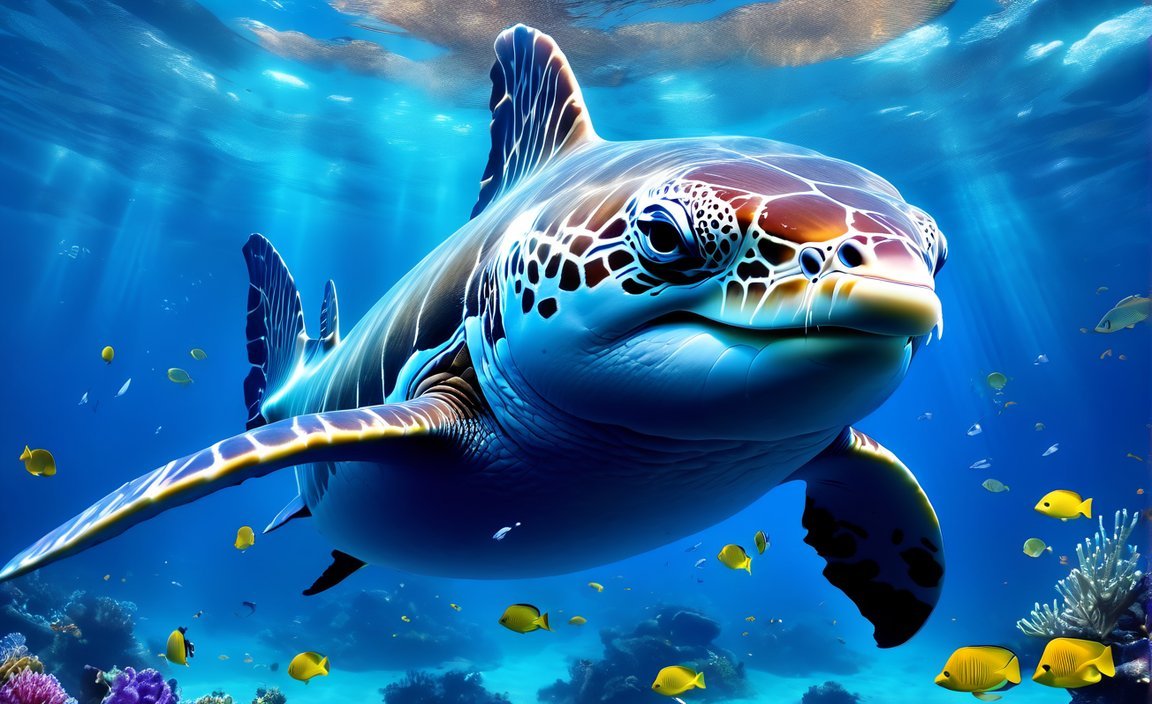
FAQ
Q1: Are all seahorses able to give birth and care for their young?
A1: No, only male seahorses are capable of giving birth and caring for their young. This unique behavior sets them apart from most other animals. [^1^]
Q2: Do all ocean animals have their hearts located in their heads like shrimp?
A2: No, the shrimp is one of the few ocean animals that have their hearts located in their heads. This interesting anatomical feature allows the shrimp to have efficient circulation despite its small size. [^1^]
Q3: How do sea sponges survive without essential body parts like a head, mouth, or brain?
A3: Sea sponges are fascinating creatures that are alive despite lacking traditional body parts. They rely on specialized cells and structures to perform essential functions like capturing food particles and eliminating waste. Their survival is a testament to the diversity of adaptations in the ocean. [^1^]
Q4: Is it true that turtles can be found on every continent except Antarctica?
A4: Yes, turtles are indeed found on every continent except Antarctica. They have adapted to various marine and terrestrial habitats, making them a diverse group of animals that can thrive in different environments. [^1^]
Q5: How large can a blue whale grow, and what makes it unique?
A5: The blue whale holds the title for being the largest animal ever to live on Earth. It can reach lengths as long as two school buses, making it truly remarkable. Its immense size allows it to sustain itself by feasting on tiny marine organisms like krill. [^1^]
- Star Ring Trends: Etsy vs Amazon - March 28, 2025
- Boost Pollinator Habitats: Baby Blue Eyes Sustainable Farming Guide - March 28, 2025
- Protect Big Black Bears: Effective Conservation Strategies - March 28, 2025
